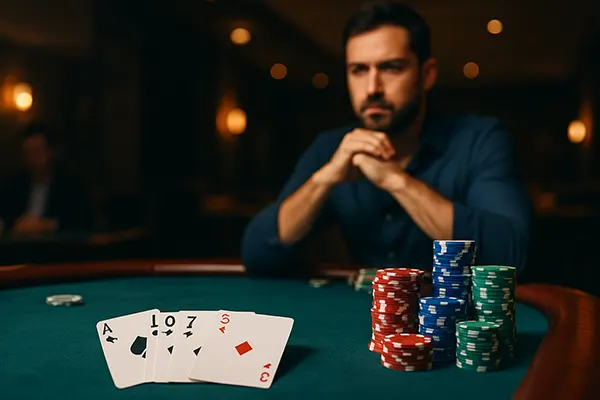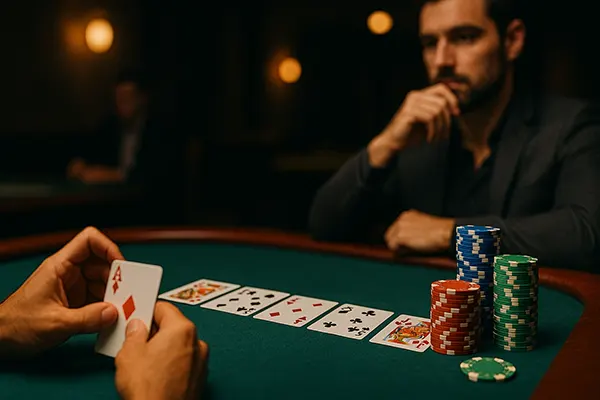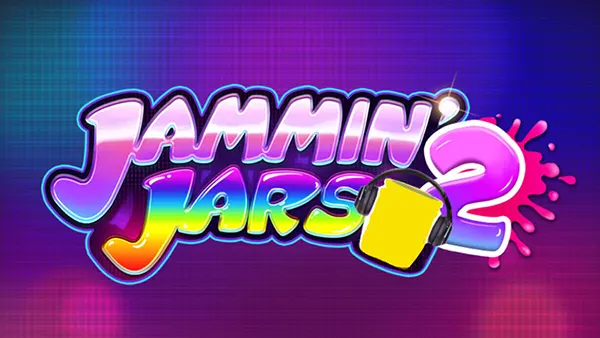
How to Combine GTO and Exploitative Play in Poker: When ‘Not Being Balanced’ Is Profitable
In 2025, the balance between Game Theory Optimal (GTO) and exploitative poker remains one of the most discussed topics among both professionals and dedicated players. While GTO provides a mathematically sound foundation, pure balance is not always the most profitable approach at real tables. The art of modern poker lies in knowing when to deviate from theoretical perfection to take advantage of opponents’ tendencies. Understanding how to merge these two approaches effectively defines the difference between consistent winners and average players.
The Core Idea Behind GTO Poker
GTO poker represents a theoretical strategy in which a player makes decisions that cannot be exploited in the long term. Every action—bet, raise, call, or fold—is part of a balanced range designed to make the opponent indifferent to their own choices. It’s a defensive yet resilient style that ensures you are never making substantial errors, regardless of who sits across the table.
In online environments, especially in mid- and high-stakes cash games, solvers have made GTO strategy more accessible than ever. Tools like PioSOLVER and GTO Wizard allow players to study optimal ranges for every situation. However, real human play deviates from theory. Many opponents still make mistakes—playing too tight, over-bluffing, or failing to adjust to bet sizing—creating opportunities that a strict GTO approach might overlook.
Therefore, while understanding equilibrium strategy is essential, blindly following it can limit potential profit. The key lies in learning the structure of GTO decisions and then adapting intelligently when you identify exploitable patterns in others’ behaviour.
Recognising When to Deviate from GTO
Not every poker situation requires perfect balance. In fact, the most successful players in 2025 are those who know when to step away from the equilibrium and target specific leaks. For instance, if an opponent consistently folds to continuation bets, it’s logical to increase your bluff frequency even if this move deviates from GTO recommendations. Similarly, if a player never folds to river bets, you should adjust by value-betting more and reducing bluffs.
These deviations are not random. They are informed by observation, data tracking, and logic. Many professionals use HUDs or database analysis to detect statistical weaknesses. The moment such a tendency is spotted, the goal shifts from balance to exploitation—because profit comes from capitalising on others’ errors, not from playing perfectly against theoretical models.
However, deviation must be controlled. Over-adjusting without reliable evidence leads to variance and potential loss. The most effective exploitative plays are those supported by strong, repeated data, rather than assumptions formed after one or two unusual hands.
How to Combine GTO Foundations with Exploitative Adaptations
Combining GTO and exploitative strategies requires structure and discipline. The idea is not to abandon theory but to use it as a benchmark. A good player starts from a GTO baseline and then shifts slightly depending on what the opponent reveals. This is why the best poker minds of today are often those with strong theoretical training who can also think creatively in dynamic situations.
One practical method is to assign exploitative weightings to certain lines. For example, if your GTO mix suggests betting 70% of the time and checking 30%, you might increase betting frequency to 80% if the opponent folds too often. The adjustment remains within logical limits—it’s an informed deviation, not an emotional reaction.
This hybrid strategy also helps maintain mental stability. When a player relies solely on exploitation, they risk emotional swings because their strategy depends heavily on opponents’ mistakes. By contrast, keeping GTO as a foundation ensures consistency, even when reads fail or variance strikes. That’s why modern professionals build their decision-making around “flexible GTO”—a balance between safety and aggression.
Examples of Balanced Exploitation in Practice
Let’s take a common example from No-Limit Hold’em: defending the big blind. According to GTO, you should defend roughly 40–45% of hands against a standard small blind open. But if the opponent is a tight regular who opens only premium holdings, adjusting down to 25–30% is immediately more profitable. The shift increases expected value because you avoid marginal spots where you’re likely behind.
Another scenario involves river bluffs. A GTO strategy requires a balanced ratio of value bets to bluffs. Yet when facing an opponent who hates folding, the most rational decision is to reduce bluffs drastically. You don’t need balance against someone who refuses to exploit imbalance. Here, exploitative logic overtakes theory, leading to higher long-term gain.
Even in multiway pots, where GTO solvers offer limited guidance, observation beats calculation. Noticing how others react to pressure allows you to adjust your frequency of aggression or passivity. These real-world deviations reflect expertise—an ability to read both numbers and people.

Modern Tools and Data for Strategy Refinement
As of 2025, advanced poker software has transformed how players analyse the GTO versus exploitative debate. Solvers, tracking tools, and AI-based assistants now allow for precise review of post-session data, revealing where each player diverges from optimal play. Modern professionals use these tools not only for study but also to simulate exploitative adjustments based on database tendencies.
Programs like Simple GTO Trainer and PokerSnowie can now generate hybrid strategies, suggesting optimal adjustments against specific player types. These tools, when used correctly, provide measurable results by comparing actual outcomes with simulated expectations. The key, however, is still human interpretation: knowing when the data supports deviation and when variance simply misleads.
Furthermore, the mental aspect of blending theory with exploitation remains essential. A disciplined mindset prevents overconfidence in reads and ensures that mathematical grounding remains intact. The strongest players in 2025 treat GTO not as a restriction but as a flexible framework within which creativity and intuition thrive.
Building Long-Term Profitability through Balanced Play
Combining both strategies effectively requires consistent review and feedback. Players who regularly evaluate their hands, identify misplays, and refine their approach grow faster than those relying on intuition alone. Exploitative opportunities are temporary, but GTO knowledge is permanent; mastering both provides stability across different player pools and formats.
In tournament play, the hybrid method shines. Stack depths, ICM pressure, and changing table dynamics make pure GTO nearly impossible to apply perfectly. That’s why professionals integrate exploitative reasoning, adapting their ranges based on position, opponent profiles, and stage of the event. The resulting style—strategically fluid yet mathematically sound—defines 2025 poker’s highest level.
Ultimately, “not being balanced” is profitable only when done deliberately. The mark of a true professional is the ability to recognise when imbalance becomes a weapon rather than a weakness. By understanding both the art and science of poker strategy, players ensure not just short-term success but sustainable mastery of the game.
Most popular
-
 Royal Coins 2: Hold and Win
Royal Coins 2: Hold and WinThe first version of this development proved to be a great success as soon as it was …
-
 Hooked on Wins: A Dive into Big Fishing Online Slot by Red Tiger
Hooked on Wins: A Dive into Big Fishing Online Slot by Red TigerIn the ever-expanding universe of online slots, the Big Fishing game by Red Tiger emerges as a …
-
 Jammin’ Jars 2: did the sequel really outshine the original?
Jammin’ Jars 2: did the sequel really outshine the original?When Push Gaming released Jammin’ Jars in 2020, the slot quickly earned a reputation for its unconventional …
